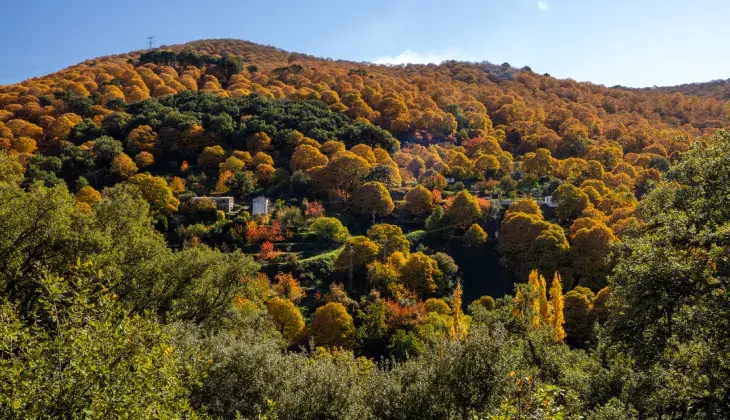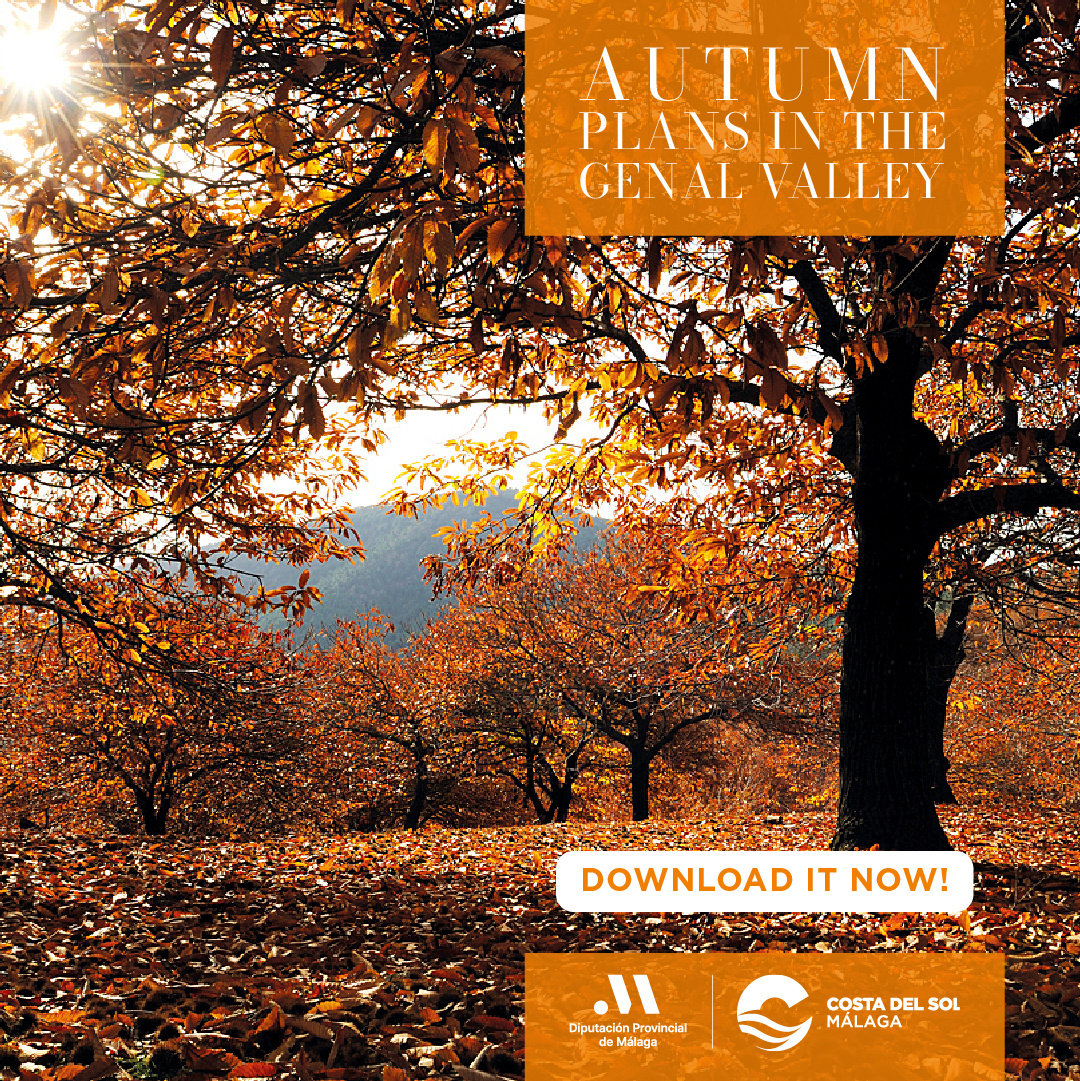Autumn transforms the Costa del Sol into a spectacle of colours and aromas. The inland villages are dressed in golden tones, the mountains invite you to stroll under their forests and the gastronomy comforts with seasonal flavours.
It is the ideal time to discover authentic corners of the province of Malaga, where life goes by calmly and traditionally.
Ready for this trip? Read!
Inland Malaga villages: a journey to the heart of the province
Visiting the villages of inland Malaga in autumn is to feel the province from the inside. Each region has a unique character, with landscapes, monuments and customs that are shown in their maximum splendour in this season.
The Axarquía: Moorish essence and Raisin Route
In the Axarquia, white villages shine under clear skies and golden vineyards. Frigiliana falls in love with its whitewashed streets and Alfarnate invites you to savour migas by the fireplace. The Raisin Route, with villages such as El Borge, Almáchar or Moclinejo, shows a unique landscape in autumn: raisins full of bunches in the sun and aromas that evoke tradition.

Antequera and its surroundings: history among ochre colours
In the region of Antequera, autumn enhances the heritage and natural value of the area. Mollina, with its extensive vineyards, shows autumn landscapes linked to wine, while in Fuente de Piedra, the large lagoon is surrounded by wide horizons that convey calm, even outside the flamingo season.
Casabermeja surprises with its historic cemetery, one of the most unique in Spain, and with views of the Malaga plain tinged with ochre tones. For its part, in Villanueva de la Concepción, autumn invites you to walk the paths that ascend to El Torcal, ideal for nature and photography lovers.
Serranía de Ronda and Genal Valley: the Copper Forest
Autumn in the Serranía de Ronda is a spectacle of contrasts. Villages such as Montejaque, Benaoján or Jimera de Líbar show their charm between mountains and traditions. We must also mention the city of Ronda, which displays all its magnetism with historic streets and viewpoints that look out over infinity.
For its part, in the Genal Valley, villages such as Pujerra, Genalguacil, Jubrique or Parauta are surrounded by the famous Copper Forest, where chestnut groves paint the landscape in gold and red. A unique experience that makes this region the most autumnal postcard of the province.

Nororma: history and nature in the north of Malaga
The region of Nororma surprises in autumn with villages full of history and mountainous landscapes.
Archidona shines with its Plaza Ochavada, a baroque jewel that frames local life, and the Sanctuary of the Virgen de Gracia, at the top of the Sierra, offers spectacular views among autumn forests.
In the municipality of Cuevas de San Marcos, the Iznájar reservoir, on the border of the province of Cordoba, offers unique panoramic views at sunset, while in Villanueva del Trabuco and Villanueva del Rosario the hiking trails are perfect for enjoying the fresh autumn air.
Guadalteba: water, castles and infinite horizons
The region of Guadalteba combines medieval heritage and aquatic landscapes that reach their maximum charm in autumn.
In Ardales, the Moorish castle and the whitewashed streets lead the visitor to the surroundings of the Caminito del Rey, where the mountains show warm tones. Campillos surprises with its steppe lagoons, home to migratory birds in this season. And in Teba, the imposing Castillo de la Estrella dominates the landscape, a place full of legends that takes on a special air among the autumn skies.

Sierra de las Nieves: a great destination to enjoy autumn
The Sierra de las Nieves National Park becomes a paradise of colours and trails in autumn.
In Yunquera, surrounded by the largest Spanish fir forest in Europe, walks under these ancient conifers are a unique experience. Tolox, famous for its spa with medicinal waters, invites you to combine health and nature in an environment that is filled with calm in this season. And in El Burgo, the Turón River crosses a landscape that, with the golden tones of autumn, seems to be taken from a postcard.
Guadalhorce Valley: tradition, monuments and fertile orchards
The Guadalhorce Valley is the great orchard of the province, and in autumn its orange and lemon groves perfume the air.
In Álora, the Moorish castle dominates a historic centre full of charming corners, and the proximity to the Caminito del Rey makes the municipality an essential destination. Coín, with its traditional bread ovens, is perfect for enjoying the local cuisine after a stroll through its lively squares and streets. In Cártama, the climb to the hermitage of Nuestra Señora de los Remedios offers unique panoramic views over the valley, especially beautiful at sunset.

Autumn in the province of Malaga: the most authentic season
The villages of inland Malaga in autumn are filled with calm and intense colours. The mountains are covered in golden tones and the skies take on a special light.
Each region offers unique landscapes that invite you to explore them calmly.
Autumn is, without a doubt, the most authentic season to discover your interior.









